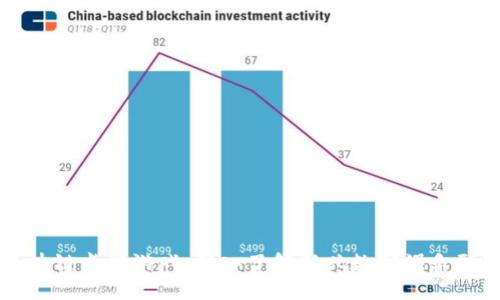### 内容主体大纲1. **引言** - 介绍区块链游戏的崛起与发展 - 为什么选择合适的手机是关键2. **区块链游戏的特点** ...
区块链卡牌游戏 combines the age-old appeal of trading card games with cutting-edge blockchain technology, creating a unique gaming experience that offers players true ownership of their in-game assets. Each card in these games is represented as a unique digital token on the blockchain, ensuring authenticity and scarcity. When a player acquires a card, they are not merely borrowing or renting it; they actually "own" it, allowing for trading and selling on various decentralized marketplaces.
The operations of such games revolve around smart contracts, which are self-executing contracts with the terms of the agreement directly written into code. These smart contracts execute game rules, manage transactions, and handle the distribution of rewards without the need for a trusted central authority. This structure builds trust between players, as they can rely on the immutability and transparency of blockchain technology.
Furthermore, the blockchain enables cross-game asset compatibility, meaning that a card or asset obtained in one game could potentially be used in another, broadening its utility and enhancing player engagement.
####
Fairness is a crucial aspect of any gaming experience, and blockchain technology plays a pivotal role in ensuring that all players are treated equitably. The decentralized nature of blockchain means that no single entity has control over the game, minimizing the risk of biased decisions or manipulations of game outcomes.
With every action recorded on a transparent ledger, players can verify game states independently. This transparency reduces instances of cheating, as any attempt to alter game data would require overriding the consensus of all participants in the network.
Moreover, randomized processes in card draws, loot boxes, and rewards are dictated by algorithms on the blockchain, ensuring that outcomes are truly random and not subject to external tampering. Thus, players can enjoy a level playing field based on skill and strategy rather than unfair advantages.
####One of the most appealing aspects of blockchain card games is the potential for financial rewards. Players can earn from various sources, including trading rare cards, winning tournaments, or achieving in-game milestones that lead to token rewards.
Trading cards on decentralized markets allows players to sell or auction their assets to others, effectively turning their investments in time or money into tangible returns. The value of these cards can appreciate over time, especially if tied to a popular game or a trending market.
Additionally, many blockchain games implement play-to-earn models, whereby players can earn cryptocurrency or in-game tokens simply by playing. This creates an environment where engaging in the game not only provides entertainment but can also lead to significant economic benefits.
####
When comparing user experiences between traditional card games and blockchain card games, several distinct differences arise. For starters, blockchain games often provide players with complete ownership and control of their digital assets, contrasting with traditional models where game companies retain control over player accounts and assets.
Moreover, the interoperability of assets across different games opens new avenues for gameplay and investment that were not possible before. Players can carry their favorite cards across multiple games, enriching their gaming experience.
In terms of community interaction, blockchain games often foster strong communities where players can collaborate and develop strategies together or build their own gaming content. This community aspect is typically more pronounced due to the financial implications tied to players’ interactions.
####Investors are increasingly turning their attention to blockchain card games due to their unique business models and growth potential. The ability to create real, tradable assets within games presents new opportunities in the gaming and tech industries.
The NFT (Non-Fungible Token) craze has also highlighted how digital art and collectibles can achieve staggering valuations. As many blockchain card games leverage NFT technology to offer unique cards, investors see them not just as games but as potential assets that might appreciate significantly in value.
Furthermore, the play-to-earn model has attracted a broad player base, increasing the overall market size and profitability potential for these games. Investors are capitalizing on this burgeoning trend by funding promising projects and startups that capitalize on the blockchain gaming revolution.
####Despite the advantages, blockchain card games encounter several significant challenges. One of the most pressing issues is scalability; as more players join, the underlying blockchain technology can struggle to handle increased demand, leading to slow transaction times and higher costs.
Additionally, there exists a steep learning curve for new players unfamiliar with blockchain technology. Educating potential players about managing wallets, securing assets, and navigating blockchain networks is essential for user adoption.
Market volatility also poses a risk; the value of in-game assets can fluctuate drastically, potentially impacting player investment and enjoyment. Thus, developers must balance fun gameplay with economic viability.
####The future of blockchain card games is promising, with several exciting directions to explore. Continued advancements in blockchain technology may result in faster and more scalable game solutions, enhancing user experiences.
Moreover, as regulatory frameworks develop around cryptocurrencies and blockchain assets, confidence in these markets will likely grow, fostering wider adoption of blockchain gaming.
Cross-platform play will become increasingly prominent, allowing players to connect and engage with each other regardless of the hardware or software they use. This interconnectedness can drive more compelling community-driven content and gameplay experiences.
In summary, the trajectory of blockchain card games suggests an evolution towards greater interactivity, community involvement, and an enhanced emphasis on player-driven economies.
通过上述问题的详细解答,本篇文章将围绕区块链卡牌游戏展开深度探讨,展现其运行机制、用户体验、未来挑战与机遇,助力读者更好的理解这一新兴的游戏形式。